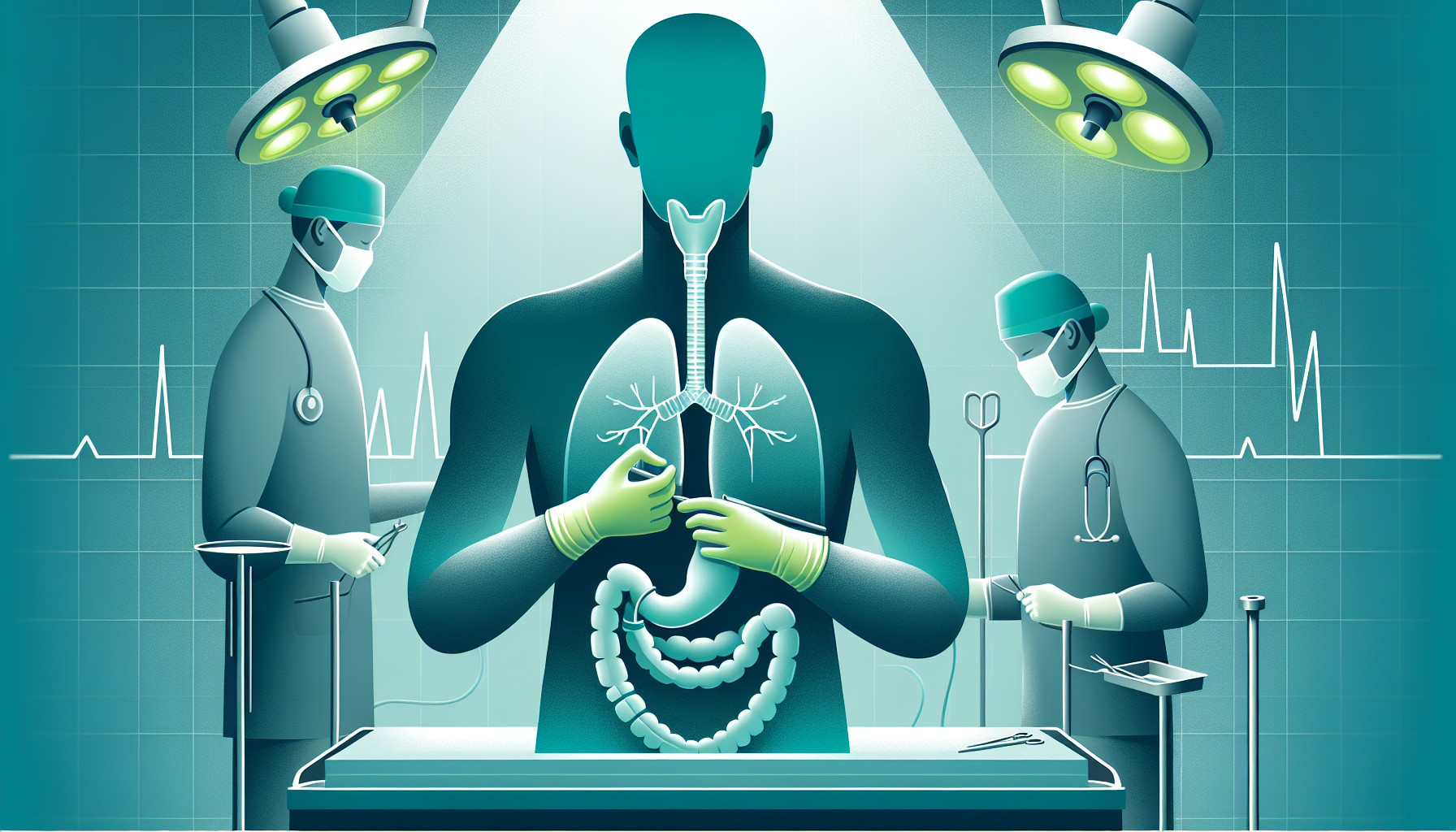Our Summary
In 1945, a Welsh doctor named Ivor Lewis came up with a new method to remove tumors from the middle part of the esophagus (the tube that connects your throat to your stomach) by operating through the abdomen and right side of the chest. Although his idea was initially rejected by the top esophageal surgeons of the time, it soon became the go-to method for treating cancers in the middle of the esophagus. This paper looks at how Lewis’ surgery became popular by using the example of the famous American actor Humphrey Bogart, who had this operation done in 1956 to treat his esophageal cancer.
FAQs
- What is an Ivor Lewis esophagectomy and who first performed it?
- Why was the Ivor Lewis esophagectomy technique initially rebuffed by esophageal surgeons?
- Who was one of the notable early patients to undergo an Ivor Lewis esophagectomy?
Doctor’s Tip
One helpful tip a doctor might tell a patient about esophagectomy is to follow a strict diet and avoid certain foods that may irritate the healing esophagus, such as spicy or acidic foods. It is important to eat small, frequent meals and chew food thoroughly to aid in digestion and prevent discomfort. It is also essential to stay hydrated and avoid alcohol and tobacco, as these can delay healing and increase the risk of complications. Regular follow-up appointments with your healthcare team are crucial to monitor your progress and address any concerns.
Suitable For
Esophagectomy is typically recommended for patients with esophageal cancer, particularly those with tumors located in the midesophagus. Other conditions that may warrant an esophagectomy include Barrett’s esophagus with high-grade dysplasia, severe esophageal strictures that cannot be managed with less invasive treatments, and refractory gastroesophageal reflux disease (GERD) with complications such as Barrett’s esophagus or esophageal strictures. Patients who are otherwise healthy and able to tolerate major surgery may be candidates for esophagectomy. It is important for patients to discuss the potential risks and benefits of the procedure with their healthcare provider to determine if esophagectomy is the best treatment option for their specific condition.
Timeline
Before esophagectomy:
- Patient undergoes various diagnostic tests such as endoscopy, biopsy, CT scans, and PET scans to confirm the presence of esophageal cancer and determine the stage of the disease.
- Patient may undergo neoadjuvant therapy such as chemotherapy and/or radiation to shrink the tumor before surgery.
- Patient meets with a multidisciplinary team including surgeons, oncologists, and support staff to discuss the procedure and post-operative care.
After esophagectomy:
- Patient undergoes the surgical procedure, which involves removing a portion of the esophagus, usually with surrounding lymph nodes, and reconstructing the digestive tract.
- Patient is closely monitored in the intensive care unit immediately following surgery to manage pain, monitor for complications, and ensure proper healing.
- Patient undergoes a period of recovery and rehabilitation, which may include physical therapy, speech therapy, and dietary adjustments.
- Patient may experience side effects such as difficulty swallowing, reflux, and changes in eating habits.
- Patient undergoes regular follow-up appointments and monitoring to check for recurrence of cancer and manage any long-term effects of the surgery.
What to Ask Your Doctor
- What is the purpose of an esophagectomy and why is it being recommended for me?
- What are the potential risks and complications associated with an esophagectomy?
- What is the success rate of esophagectomy in treating esophageal cancer?
- How long is the recovery period after an esophagectomy and what can I expect during that time?
- Will I need any additional treatments, such as chemotherapy or radiation therapy, after the surgery?
- How will the surgery affect my ability to eat and swallow?
- What changes will I need to make to my diet and lifestyle after the surgery?
- How often will I need follow-up appointments and monitoring after the surgery?
- Are there any alternative treatments or surgical approaches that I should consider?
- What is the experience and success rate of the surgical team performing the esophagectomy?
Reference
Authors: Rucker AJ, D’Amico TA, Pappas TN. Journal: Ann Thorac Surg. 2024 Aug;118(2):510-516. doi: 10.1016/j.athoracsur.2024.03.033. Epub 2024 Apr 12. PMID: 38615977
